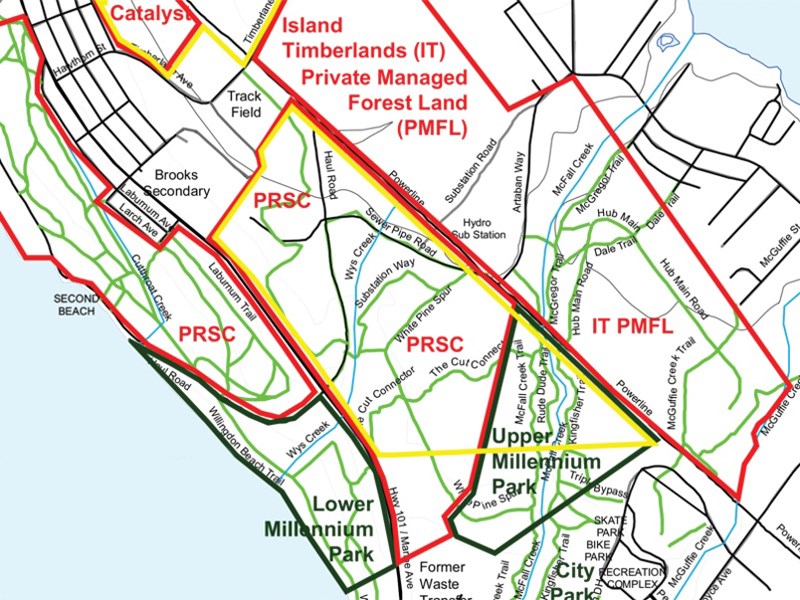The potentially costly impasse between City of Powell River and the Agricultural Land Commission (ALC) over the looped road serving Timberland Estates is just the latest in a series of conflicts. In every one of them the city has come out the loser because it cannot seem to come to terms with either the mandate or the power of the ALC.
The history of the city’s requests for removal of land from the Agricultural Land Reserve (ALR) goes back to 1994 when MacMillan Bloedel, supported by the city, sought to have 277 acres of its land excluded. ALC staff recommended against it but the commission “reluctantly” agreed on the basis that Powell River claimed there was a compelling community need to develop the land. The ALC’s reluctance seems justified: the land was never developed as promised.
Then, in 2006, came the request from PRSC, the land development partnership established by Catalyst Paper Corporation, the city and Tla’amin Nation, for the removal of 605 acresto accommodate the Yrainucep development. The ALC turned that request down flat, partly because the previously excluded lands were still undeveloped.
It would be reasonable to expect two major ALC rejections and the reasons for them would have raised red flags for the city and PRSC. But it was just four years later that PRSC and the city agreed to a right of way on ALR land for a looped road to service Timberland Estates. The developer’s consultant advised, incorrectly, that no application needed to be made to the ALC for the right of way. According to an April 5, 2016, planning department report, previous staff followed that advice.
When notified by the ALC that the looped road contravened the law, the city responded by proposing the road be buffered, further alienating land from the agricultural reserve. But as the ALC dryly pointed out when it refused this proposal, it is “not in favour of utilizing and alienating ALR land in order to accommodate residential development outside of the ALR.”
Another chapter in the Powell River/ALC saga was the 2016 request for the exclusion of 30 acres to accommodate city and School District 47’s plans for the Sino Bright school. The ALC said no again, ruling the proposal was not “compelling” and that the school would be more appropriately located on land outside the ALR.
As for the loop road servicing Timberlane Estates, the city may be left holding the bag, a potentially expensive one. The city may not only have to remove the road but also remediate the land. If it does not, there is the possibility of a $100,000 ALC fine or up to $1,000,000 in penalties if the issue goes to court.
There seems to be a fundamental conflict between PRSC’s original mandate to promote urban densification and industrial development and the ALC’s, which is to protect land for agricultural use.
In his previous role as a director of PRSC, mayor Dave Formosa argued in favour of removing land from the ALR for Yrainucep in a September 2006 Peak article saying, “If we don’t take it out of the ALR, how can we move forward?”
But clearly the city will have to embrace the local mandate of the ALC in the future rather than resist it. Otherwise moving forward will continue to be plagued by conflict.
Murray Dobbin is a Powell River freelance writer and social commentator.



